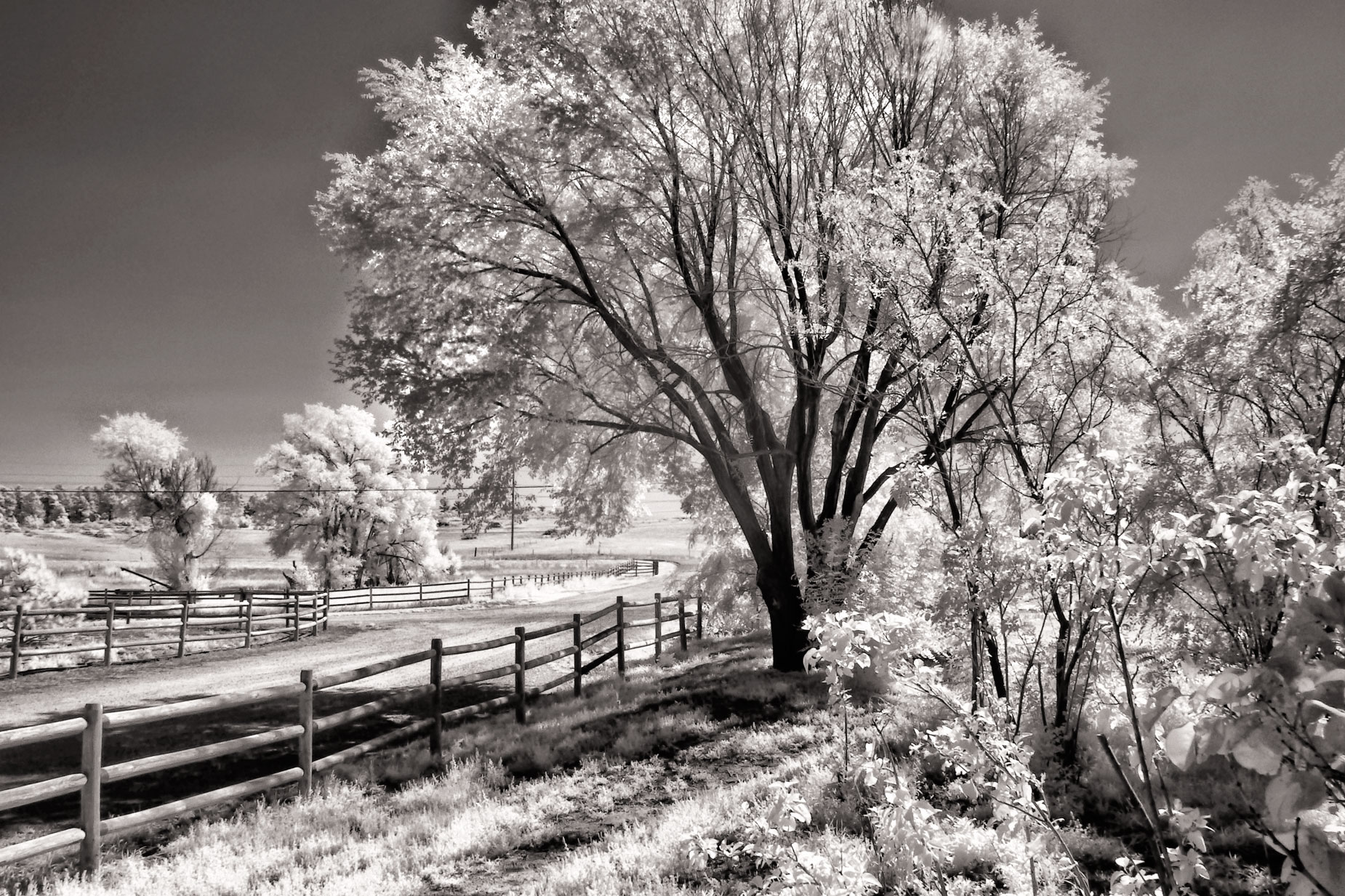Today’s Post by Joe Farace
“Black and white is abstract; colour is not. Looking at a black and white photograph, you are already looking at a strange world.” – Joel Sternfeld
When learning to see infrared imaging possibilities, the first thing I would like to suggest that you do is try to forget everything that you know about making photographs using visible light. That’s because when it comes to shooting infrared images everything you know about light is wrong.

How I Made this shot:I Made the above image at Hidden Mesa Open Space in Douglas County, Colorado. The camera used was a Panasonic Lumix G5 with a Standard IR (720nm) filter conversion done by Life Pixel. Image was converted to monochrome with Silver Efex.
For instance, subjects that appear equally bright when viewed under visible light might reflect infrared radiation at different rates and when captured with a digital camera converted for IR photography (or though IR filters) they can exhibit different brightness. Conventional exposure meters aren’t sensitive to infrared light, so theoretically it could be difficult to calculate exact exposures but that doesn’t mean you shouldn’t try, especially with the help of your camera’s LCD screen providing instant feedback.
Here’s a few tips:
- When you’re getting started with infrared photography, it’s a good idea to bracket a series of three to five different exposures until you see what the best exposure may be—with your particular camera or camera/filter combo. Most modern DSLRs or mirrorless cameras have an auto bracketing function that will let you make a specified series of shots at exposures over and under what’s considered “normal.” Because every camera’s a little different, read your camera’s manual for specific directions.
- If your camera doesn’t have auto bracketing, it should have an Exposure Compensation control that will let you adjust exposures in one-half or one-third stops. If all else fails, use Manual mode. When using filters, for example, I often look through the viewfinder in Program mode to see what the suggested exposure is, then transfer that shutter speed and aperture to the camera when it’s in manual mode and then bracket on the overexposure side until I see that the foliage is clean and bright on the LCD screen
 Just because you don’t have a converted IR camera doesn’t mean you can’t use these tips with filters on cameras that are IR capable. When using these dark (you really can’t see though them) filters you’ll need a tripod because of the long exposure times they generate.
Just because you don’t have a converted IR camera doesn’t mean you can’t use these tips with filters on cameras that are IR capable. When using these dark (you really can’t see though them) filters you’ll need a tripod because of the long exposure times they generate.- When shooting with IR filters, focus first then put the filter on the camera. Usually I just hold it there with my fingers during the exposure or have somebody else, as Mary is doing at right, which is just another reason why a tripod comes in handy.
 I’ve found that Life Pixel does a great job with IR conversions and they’ve done most of the conversions for my Canon DSLRs and all of my Panasonic Lumix G-series cameras. This is not a paid or sponsored endorsement, just my experience.
I’ve found that Life Pixel does a great job with IR conversions and they’ve done most of the conversions for my Canon DSLRs and all of my Panasonic Lumix G-series cameras. This is not a paid or sponsored endorsement, just my experience.
Used copies of my book, The Complete Guide to Digital Infrared Photography are currently available new from Amazon for $33.66 or used copies for less than four bucks, as I write this. Creative Digital Monochrome Effects has a chapter on IR photography and new copies are available from Amazon for $16.16 with used copies starting at less than three bucks, which is a heckuva deal.